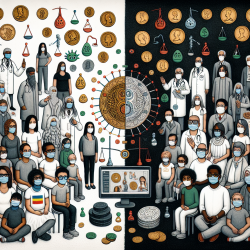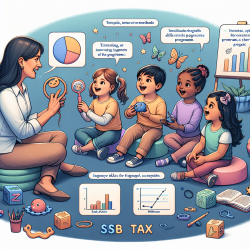Introduction
As professionals in the field of speech-language pathology, we are constantly seeking innovative ways to improve our practices and outcomes for children. One way to achieve this is by drawing insights from interdisciplinary research, such as the study of judicial voting patterns. The research article "Valence and Interactions in Judicial Voting" provides a compelling framework that can be adapted to our field to enhance decision-making processes.
Understanding the Research
The study conducted by Lee and Cantwell (2023) explores the complexities of judicial voting by examining how judges' decisions are influenced not only by individual biases but also by peer interactions. By applying a minimal model to US Supreme Court voting data, the researchers identified that peer interaction is a significant factor in decision-making, often overshadowing individual biases.
This model challenges the traditional view that judges make decisions independently, highlighting the importance of considering both individual and collective influences. The research underscores the role of context and interaction in shaping outcomes, offering a new lens through which to view decision-making processes.
Applying Insights to Speech-Language Pathology
In speech-language pathology, practitioners often work in multidisciplinary teams where decisions about interventions and treatment plans are made collectively. By incorporating the insights from this research, practitioners can enhance their decision-making processes in several ways:
- Recognizing Peer Influence: Just as judges are influenced by their peers, speech-language pathologists can benefit from acknowledging the impact of team dynamics on decision-making. Understanding how peer interactions shape decisions can lead to more collaborative and effective treatment plans.
- Balancing Bias and Interaction: The research highlights the importance of balancing individual biases with peer influences. Practitioners should be aware of their own biases and actively seek diverse perspectives to ensure well-rounded decisions.
- Data-Driven Approaches: The use of data-driven models in the study provides a template for speech-language pathologists to incorporate evidence-based practices. By systematically analyzing data, practitioners can refine their approaches and improve outcomes for children.
Encouraging Further Research
The findings from this study open the door for further exploration in the field of speech-language pathology. Practitioners are encouraged to engage in research that examines the role of peer interactions and biases in clinical decision-making. By doing so, we can continue to advance our understanding and improve practices in the field.
Conclusion
The study "Valence and Interactions in Judicial Voting" provides valuable insights that can be applied to speech-language pathology. By recognizing the importance of peer interactions and balancing biases, practitioners can enhance their decision-making processes and ultimately improve outcomes for children. To read the original research paper, please follow this link: Valence and interactions in judicial voting.










